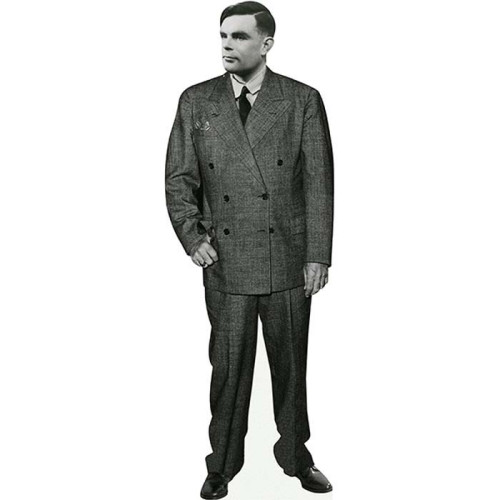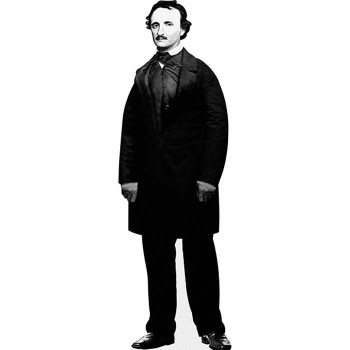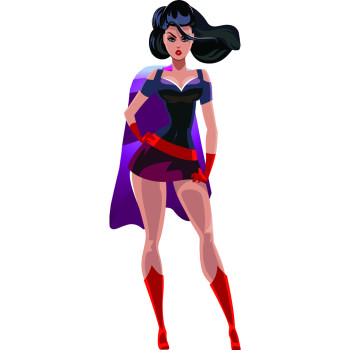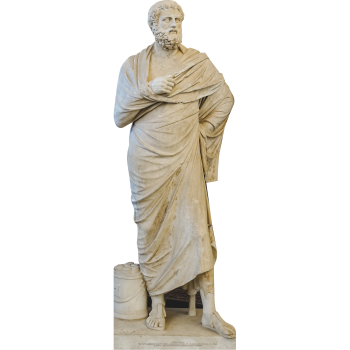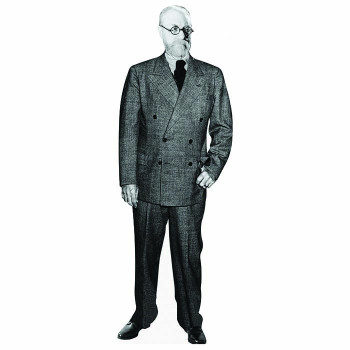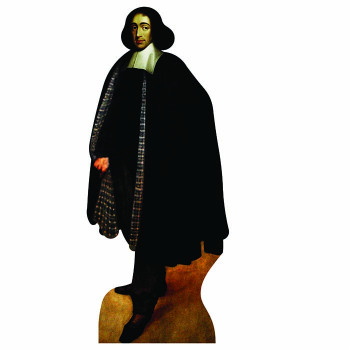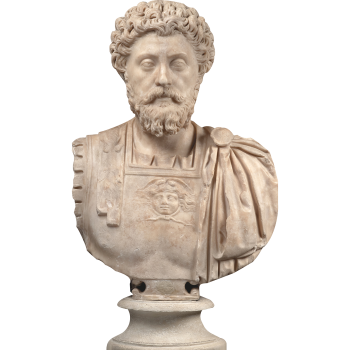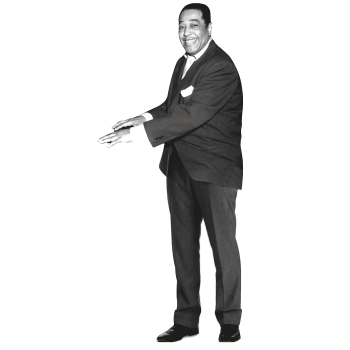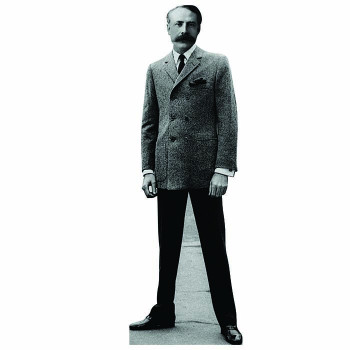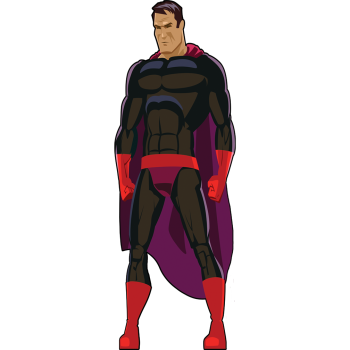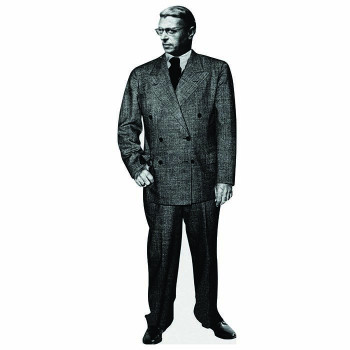ALAN TURING CARDBOARD CUTOUT
-
$0.00
Available Options
Buy Instantly With
Introduction to Alan Turing
Celebrate the legacy of one of the most brilliant mathematicians and pioneering computer scientists with our lifesize cardboard cutout of Alan Turing. Perfect for educational displays, historical events, or as an inspiring addition to your home or office, this cutout captures the innovative and intellectual presence of Alan Turing, reflecting his significant impact on computer science and modern technology.
Background of Alan Turing
Alan Mathison Turing was born on June 23, 1912, in London, England. From a young age, Turing demonstrated exceptional intellectual abilities, particularly in mathematics and science. He attended Sherborne School and later King's College, Cambridge, where he graduated with first-class honors in mathematics.
In 1936, Turing published a groundbreaking paper titled "On Computable Numbers, with an Application to the Entscheidungsproblem." In this paper, he introduced the concept of a theoretical computing machine, now known as the Turing machine, which became a fundamental model for modern computer science. Turing's work laid the foundation for the development of digital computers and established him as one of the fathers of computer science.
During World War II, Turing played a crucial role at Bletchley Park, the British government's code-breaking center. He was instrumental in breaking the German Enigma code, which significantly contributed to the Allied victory. Turing's work on cryptography and his development of the Bombe, a machine designed to decipher Enigma-encrypted messages, showcased his ingenuity and technical prowess.
After the war, Turing continued his pioneering work in computer science. He worked at the National Physical Laboratory (NPL), where he designed the Automatic Computing Engine (ACE), one of the first designs for a stored-program computer. Turing later joined the University of Manchester, where he contributed to the development of the Manchester Mark I, one of the earliest computers.
In 1950, Turing published a seminal paper, "Computing Machinery and Intelligence," which proposed the concept of the Turing Test to evaluate a machine's ability to exhibit intelligent behavior indistinguishable from that of a human. This paper is considered a cornerstone of artificial intelligence research.
Despite his professional achievements, Turing faced significant personal challenges. In 1952, he was prosecuted for homosexual acts, which were illegal in the UK at the time. Turing was subjected to chemical castration as an alternative to prison and suffered from social ostracism. He died on June 7, 1954, under circumstances that are widely believed to have been suicide.
Cultural Impact of Alan Turing
Alan Turing's impact on computer science, artificial intelligence, and cryptography is immense and enduring. His theoretical work on computation laid the groundwork for the development of modern computers and has influenced countless advancements in technology.
Turing's contributions to breaking the Enigma code during World War II were pivotal in the Allied war effort. His work in cryptography not only shortened the war but also saved countless lives. The successful decryption of Enigma-encoded messages is considered one of the greatest achievements in cryptographic history.
The concept of the Turing machine remains a fundamental model in the study of computer science. It provides a framework for understanding the limits of what can be computed and has guided the development of algorithms and programming languages. Turing's theoretical insights continue to shape the field and inspire new generations of computer scientists.
Turing's 1950 paper on artificial intelligence introduced the Turing Test, a criterion for determining whether a machine can exhibit human-like intelligence. The Turing Test has become a central topic in discussions of artificial intelligence, influencing research and debates on the nature of consciousness, machine learning, and the future of intelligent systems.
Turing's life and work have been the subject of numerous books, films, and documentaries, highlighting his genius and the tragic circumstances of his personal life. The 2014 film "The Imitation Game," starring Benedict Cumberbatch, brought Turing's story to a global audience, further cementing his legacy as a pioneering figure in science and technology.
In recognition of his contributions, Turing has been honored posthumously with numerous awards and memorials. In 2009, the British government issued a public apology for the way he was treated, and in 2013, he was granted a royal pardon. Turing's legacy continues to be celebrated, and his work remains a testament to the power of human ingenuity and the pursuit of knowledge.
This cutout of Alan Turing celebrates his remarkable contributions and enduring legacy as a visionary mathematician and computer scientist. It serves as a tribute to his intellectual brilliance, his impact on the development of modern technology, and his significant role in shaping the cultural and intellectual heritage of the digital age.
| Size | |
| Width | 25 Inches |
| Height | 72 Inches |
- Brand: Historical Cutouts
- Product Code:H79451
- Availability:In Stock
LEARN MORE ABOUT OUR AVAILABLE MATERIALS

LIFE SIZE HISTORICAL CUTOUTS
We have been the leading historical based cutout supplier for nearly 10 years. We have worked with many schools, museums, and colleges across the country to provide stunning graphics from hsitory. Historical Cutouts are available in 3 materials and come contour cut with an easel to be self standing. Click below to learn more about each material and our cutout process.
Learn More
LIFE SIZE HISTORICAL WALL DECALS
All of our historical figures are available as a life size wall decals. Vinyl wall decal orders come ready to apply with squeegie and instructions. Having trouble? Check out our how to youtube video. Our graphics are printed on tear resistant PhotoTex Vinyl using our high definition 4 color plus white printing process.
Learn More
HISTORICAL ACRYLIC CUTOUTS
Desktop Legends are a smaller version of our life size cutotus printed on 3/16th" acrylic. All of our historical cutouts are also available as a desktop legend. These acrylic statuettes come in two sizes, 8" and 12". If you would like to learn more please click below.
Learn MoreRELATED PRODUCTS
-
Delorian Front View Cardboard Cutout
Introduction to Delorian Front ViewIf you're a fan of classic movies or have a penchant for iconic c..
Leo Tolstoy Sitting Cardboard Cutout
62x46 inch cardboard cutout of Leo Tolstoy, one of the most influential authors of all time. He is m..
Edgar Alan Poe Cardboard Cutout
Introduction to Edgar Alan PoeCelebrate the legacy of one of America's most enigmatic and influentia..
Wonderful Woman Super Hero Cardboard Cutout
Introduction to Wonderful Woman Super HeroStep into a world of wonder and bravery with our delightfu..
Sophocles Cardboard Cutout
Introduction to SophoclesStep into the world of ancient Greek drama with our lifesize custom cardboa..
Henri Matisse Cardboard Cutout
Introduction to Henri MatisseCelebrate the legacy of one of the 20th century’s most influential arti..
Benedict de Spinoza Cardboard Cutout
Introduction to Benedict de SpinozaCelebrate the legacy of one of the most influential philosophers ..
Marcus Aurelius Bust Marble Head Emperor Philosophy Cardboard Cutout
Introduction to Marcus AureliusIntroducing a captivating piece of history and philosophical depth, o..
Duke Ellington Cardboard Cutout
Introduction to Duke EllingtonCelebrate the legacy of one of the most influential figures in jazz mu..
Edward Elgar Cardboard Cutout
Introduction to Edward ElgarCelebrate the legacy of one of England's most distinguished composers wi..
Underwear Over Pants Man Cardboard Cutout
Introduction to Underwear Over Pants ManImagine walking into a room and being greeted by the bold, c..
Jean-Paul Sartre Cardboard Cutout
Introduction to Jean-Paul SartreCelebrate the legacy of one of the most influential existentialist p..

